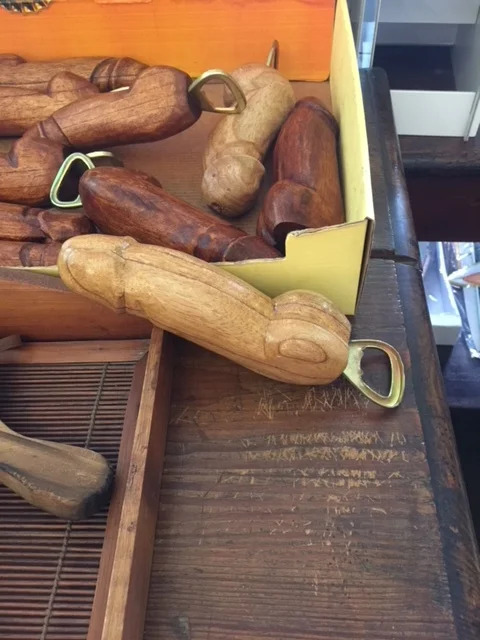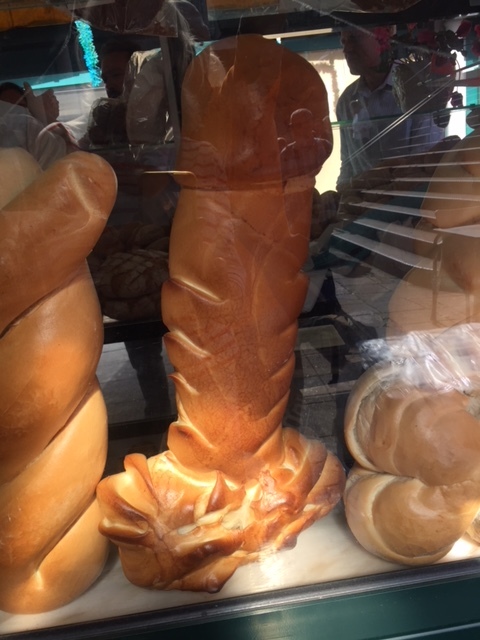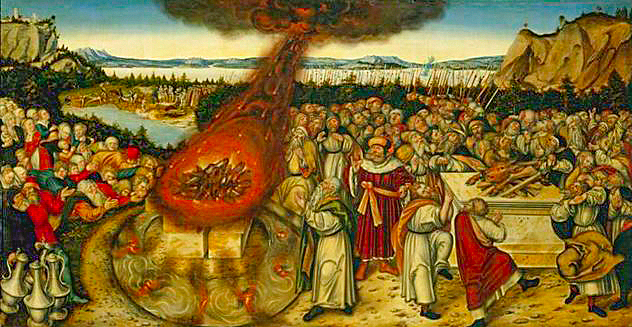From the best apps to which Camino route to choose, here’s how to prepare for the Camino de Santiago.
With beautiful landscapes, delicious food and charming customs, Spain has it all. But its pilgrimage sites are what truly make the country’s offerings unique.
Embarking on the Camino de Santiago is more than a hike across Spain — it’s a journey steeped in history, spirituality and personal discovery. For centuries, pilgrims have walked these ancient paths, drawn by faith, adventure or simply the call of the open road. Today, the Camino welcomes travelers from all walks of life, blending tradition with modern comforts.
“Coverage can be inconsistent along the more secluded stretches of the Camino.
Fortunately, there’s an easy solution: eSIMs.”
The network of routes dates back to the Middle Ages and leads to the burial site of the apostle Saint James. Despite the Christian focus, the pilgrimage paths are enjoyed by walkers, hikers and cyclists of all faiths.
Whether you’re seeking solitude, cultural immersion or the camaraderie of fellow wanderers, this guide offers essential tips to make your pilgrimage a memorable one — without leaving the 21st century behind.
1. Research the right pilgrimage for you.
The Camino de Santiago is a network of routes that span the entire country of Spain. Each promises its own experience with different cultures, adventures and challenges. Before booking, research the best routes for your needs and abilities.
Some routes are short and pleasant, while others have high elevations and more difficulty.
Camino Francés: Also known as “the French Way,” it’s the most iconic of all the Camino routes. Beginning in the charming town of Saint-Jean-Pied-de-Port, France, at the foothills of the Pyrenées, this journey takes you through a stunning tapestry of landscapes: rolling vineyards, rugged mountains, medieval villages and the golden fields of Castile. Covering around 500 miles (780 kilometers) and divided into 35 or so stages, it’s a physically demanding yet deeply fulfilling experience.
Camino Del Norte: “The Northern Way” is a breathtaking coastal pilgrimage that offers a less crowded alternative to the more popular routes. Stretching over 500 miles (800 kilometers), with the final 62 miles (100 kilometers) being the most traveled, this path hugs the rugged cliffs and pristine beaches of northern Spain.
Starting in the Basque Country, it meanders through charming fishing villages, vibrant seaside cities and lush green landscapes. The route showcases the diverse beauty of the Spanish shoreline, from the misty, mountainous regions of Asturias to the rolling hills of Cantabria. Along the way, pilgrims can indulge in the rich culture, world-class cuisine, and traditions of the Basque region — think pintxos, cider houses, and warm, welcoming locals.
Although the trail can be challenging due to its steep ascents and descents, it rewards those who tackle it with awe-inspiring views of the Cantabrian Sea and a sense of serenity that only comes from walking paths less traveled.
Camino Inglés: Travelers with limited time might opt for “the English Way.” Stretching just 74 miles (119 kilometers), this route is one of the shortest and most accessible. Historically, it was the path taken by pilgrims from England, Ireland and Northern Europe who arrived by sea.
Starting in either Ferrol or A Coruña, this trail winds through the lush Galician countryside, offering a mix of coastal views, quaint hamlets and dense forests. It’s a fantastic option for those looking to complete the journey in under a week while still embracing the essence of the Camino.
Camino Portugués: The second most popular Camino route, “the Portuguese Way,” offers a blend of rich culture and scenic landscapes across both Portugal and Spain. Pilgrims can start in Lisbon for a full 380-mile (610-kilometer) journey or opt for a shorter trek from Porto, covering 160 miles (260 kilometers). The route splits into two paths from Porto: the traditional Central Route, which takes you through historic cities and lush vineyards, and the Coastal Route, offering breathtaking ocean views and seaside towns.
With gentler terrain compared to other routes, the Camino Portugués is accessible while still delivering a full pilgrimage experience. Highlights include Portugal’s historic landmarks, from Gothic cathedrals to the Templar Castle in Tomar, along with opportunities to savor local delicacies like pastéis de nata (custard tarts) and bacalhau (dried, salted cod).
Camino Primitivo: “The Original Way” is the oldest and arguably the most challenging of the Camino routes. Dating back to the 9th century, this path was first taken by King Alfonso II when he made the pilgrimage to the newly discovered tomb of Saint James in Santiago de Compostela. Beginning in Oviedo, the Camino Primitivo spans approximately 200 miles (320 kilometers) through the rugged mountains of Asturias and Galicia.
This route is less traveled, offering a quieter and more introspective journey. The rewards are plentiful: breathtaking landscapes, encounters with ancient Roman roads and a strong sense of history.
So, how do you find the best routes? Modern travelers can now use technology to explore the Camino before booking. For example, Google Arts & Culture has an extensive library of resources in an engaging format.
2. Get accreditation for your pilgrimage.
Once you’ve mapped out your route, it’s time to prepare for the pilgrimage itself. An essential item you’ll need is the Pilgrim’s Credencial, often referred to as a “Pilgrim’s Passport.” This official document allows you to collect stamps at various points along your journey, serving as tangible proof of your progress.
Historically, the credential was granted to protect travelers during the Middle Ages. Today, it offers modern pilgrims additional perks. With the credencial, you gain access to special accommodations provided by Christian institutions throughout Spain. It also includes maps and guidance to help you navigate the pilgrimage routes. More importantly, it’s your certification for completing the Camino, allowing you to receive the Compostela certificate upon completing your journey in Santiago.
The credencial is available from institutions authorized by the Cathedral of Santiago. In response to the COVID pandemic, a digital version is now offered, allowing you to carry your credentials on your smartphone.
3. Plan your connectivity ahead of time.
No matter which route you choose, staying connected is essential — for keeping in touch with your group, accessing route maps, and updating friends and family. However, one thing that might catch you off guard is spotty connectivity. Once you start the Camino, you might find your smartphone struggling to connect. With no signal or data in some remote areas, you could feel stranded.
Even if you have an international roaming package, coverage can be inconsistent along the more secluded stretches of the Camino. Fortunately, there’s an easy solution for pilgrims heading to Spain: eSIMs.
So, what is an eSIM card? It’s a digital SIM already embedded in your smartphone that allows you to connect to the best local networks at your destination through an app. An eSIM helps ensure seamless connectivity across the varying landscapes of the Camino, even in remote areas. Whether you’re on the Camino Francés or starting your journey in Portugal, an eSIM automatically switches between networks as you cross borders, keeping you connected.
The best part? You can customize your eSIM plan to match your needs. If you don’t plan on using your smartphone often, choose a small data package that covers the essentials and top it up as needed along the way.
4. Download these helpful apps.
Travel apps can be invaluable for making your pilgrimage smoother and more enjoyable, from booking accommodations to navigating route paths. Whether you’re walking or cycling, having the right apps on hand can help you make sense of your surroundings and stay prepared.
Here are some of the best pilgrimage trail apps
Buen Camino de Santiago: This app offers a comprehensive library of maps, route profiles and more. It even provides real-time alerts on road closures, helping you plan ahead, secure accommodations and adjust your route as needed.
Camino Ninja: A free app packed with essential information, including distances, elevations, offline maps and accommodation options. It’s a handy resource to have, especially in areas with limited connectivity.
Camino Assist Pilgrim Santiago: This app features offline maps, a built-in compass, a phrasebook and a diary tool to track your journey. It’s perfect for those who want to document their experience while staying well-equipped on the road.
A Modern Way of Experiencing Spain’s Pilgrimage Trails
Spain’s Camino de Santiago offers a sanctuary for those seeking peace, reflection and spiritual growth. While the essence of the pilgrimage lies in stepping away from the fast pace of modern life, embracing technology can actually enhance your journey.
Keeping screens at a respectful distance doesn’t mean disregarding their benefits. Tools like eSIMs can ensure you stay connected for important updates and group communication, while travel apps unlock the rich cultural history of the regions you traverse, deepening your experience along the way.
With the right balance, you can embrace both tradition and modern convenience as you walk these timeless paths. –Jolene Chambers

































































